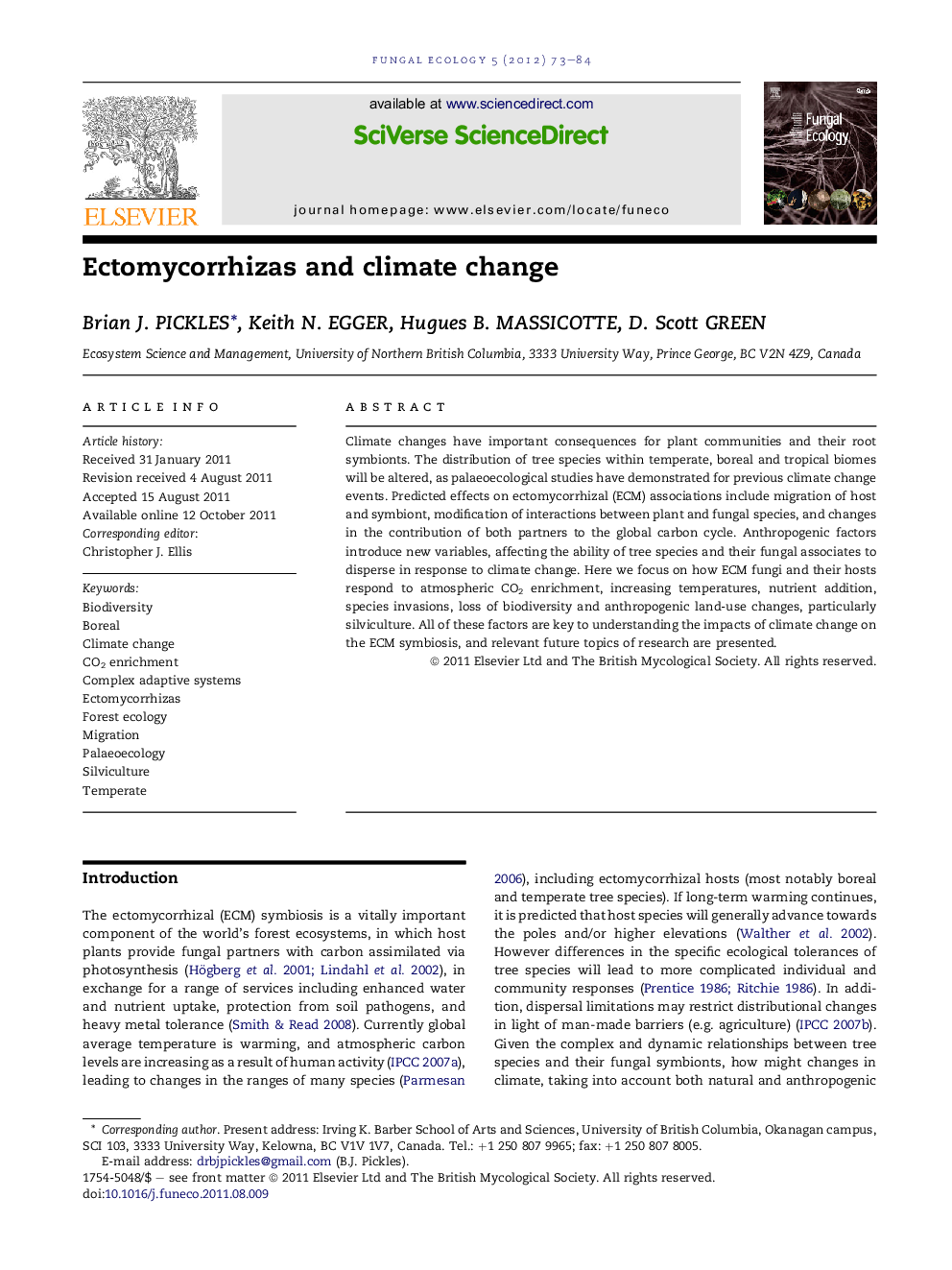| Article ID | Journal | Published Year | Pages | File Type |
|---|---|---|---|---|
| 2053622 | Fungal Ecology | 2012 | 12 Pages |
Climate changes have important consequences for plant communities and their root symbionts. The distribution of tree species within temperate, boreal and tropical biomes will be altered, as palaeoecological studies have demonstrated for previous climate change events. Predicted effects on ectomycorrhizal (ECM) associations include migration of host and symbiont, modification of interactions between plant and fungal species, and changes in the contribution of both partners to the global carbon cycle. Anthropogenic factors introduce new variables, affecting the ability of tree species and their fungal associates to disperse in response to climate change. Here we focus on how ECM fungi and their hosts respond to atmospheric CO2 enrichment, increasing temperatures, nutrient addition, species invasions, loss of biodiversity and anthropogenic land-use changes, particularly silviculture. All of these factors are key to understanding the impacts of climate change on the ECM symbiosis, and relevant future topics of research are presented.
► ECM fungi respond variably to climate change. ► Palaeoecology indicates symbiosis survived many cycles of natural climatic change. ► Fungal respiration and carbon storage significantly impact the carbon cycle. ► Human land-use changes can interfere with host and symbiont dispersal. ► ECM-dominated ecosystems require management for complexity.
